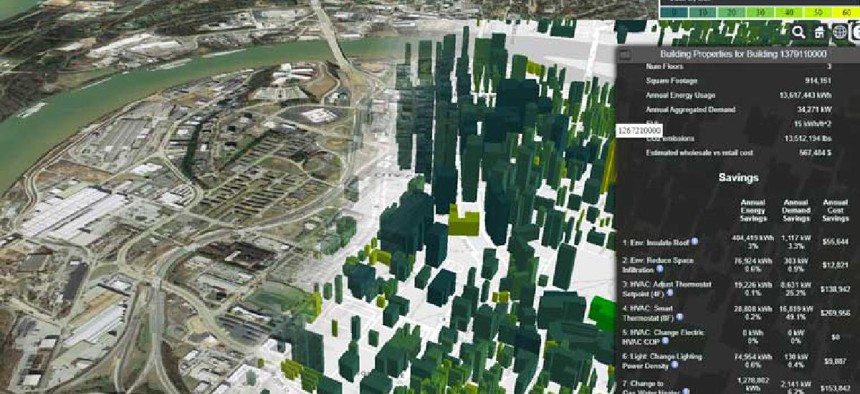Digital twin models energy profile of every US building

Oak Ridge National Laboratory’s AutoBEM software suite can make energy-saving recommendations for every building in the country.
Researchers at the Oak Ridge National Laboratory have developed a model that can simulate the energy profile of every building in the United States using public data. The program will help businesses, homeowners and utility companies reduce energy use and carbon emissions.
The Automatic Building Energy Modeling, or AutoBEM, generates digital twins to inform energy-efficient building efforts. It can provide energy details for 129 million buildings across the country, according to a recent press statement.
Since buildings account for 40% of America’s energy consumption and 75% of its electricity, AutoBEM could be an important step toward reaching the nation’s eventual goal of net-zero carbon emissions by 2050, ORNL officials said.
The project began in 2015 with the goal of using publicly available building-specific information to determine energy use in a given urban environment. Urban-scale energy modeling has ramped up in recent years thanks to the increased amount of available data, computing capabilities and open source software.
The model accesses satellite imagery, street views, lidar and other publicly available data to ascertain building details -- from the number of windows and floors to heating, ventilation and roof type – and uses algorithms to turn the data into a 3D footprint of the building. This information is then used in a high-performance computing model that predicts which technologies – such as solar panels, heat pumps, smart thermostats or energy-efficient water heaters -- can be installed to save energy.
AutoBEM has many applications, ORNL officials said. Urban planners can use it to examine blocks and even neighborhoods to identify weaknesses in their energy infrastructure. The software can also help community leaders pinpoint areas that would most benefit from a building upgrade.
Before AutoBEM, industries did not “have the information they need to make actionable business decisions on how to improve energy efficiency,” ORNL research team lead Joshua New said. “AutoBEM is a free resource that’s meant to grease the skids toward deployment.”





